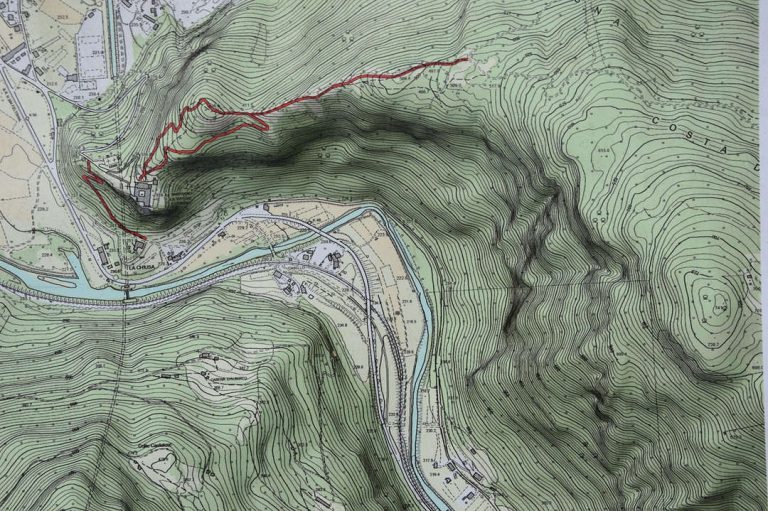7 Best Public Safety Drone 2025 (A Complete Buying Guide)
Drones have revolutionized global public safety operations, serving as invaluable force multipliers that save time, resources, and lives. Public safety agencies, including police, firefighters, and search and rescue teams, rely on drones for smarter, safer, and more efficient operations.
The future of the public safety drone market looks promising. In 2023, it boasts a valuation of $1.1 billion, and projections suggest a nearly twofold increase in value by 2028, reaching approximately $2.6 billion by 2030. This translates to an impressive compound annual growth rate (CAGR) of 12.6%.
The safety and security drone market is also poised for remarkable growth, with a projected CAGR of 18.1% between 2023 and 2030.
The need for drones in public safety has never been more evident. They play a vital role, from data collection for informed decisions to direct life and property-saving missions. However, choosing the right drone remains critical.
In this article, we explore key use cases for public safety drones and provide insights into the top options available in the market today.
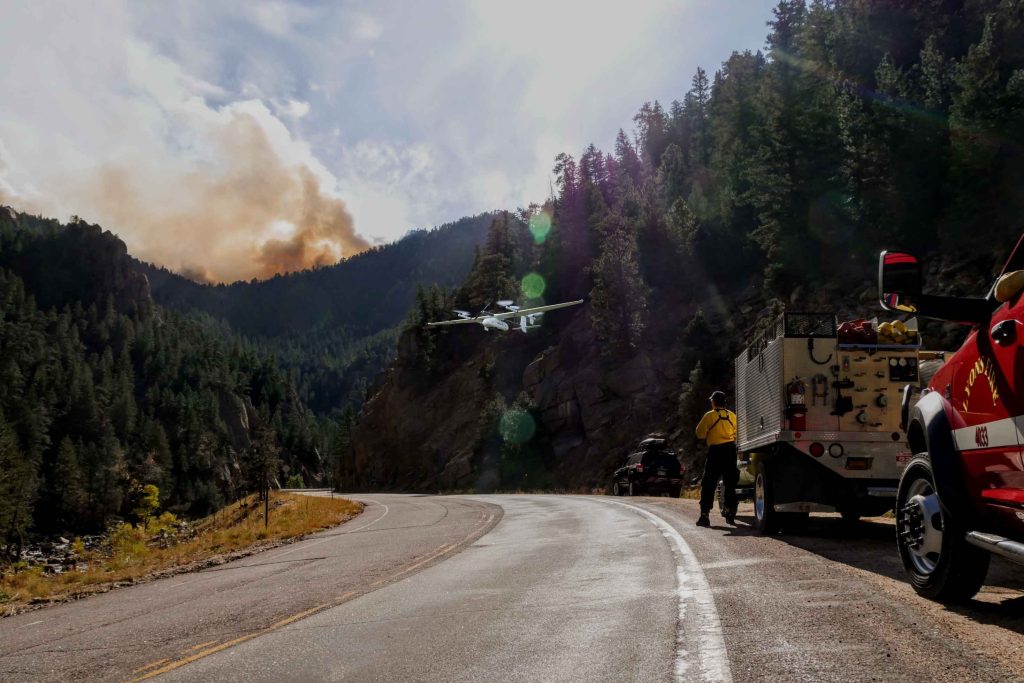
Benefits of Public Safety Drones
After exploring the various roles of public safety drones, let's delve into how these incredible devices enhance overall public safety:
Enhanced Situational Awareness
Public safety drones act as our aerial eyes in the sky. They offer real-time visual data, which is like having an extra pair of eyes during critical situations. Whether it's overseeing a large public event, assessing a disaster-stricken area, or handling a security issue, these drones provide invaluable insights to make informed decisions swiftly. They are the best drones for public safety, ensuring our teams are well-equipped.
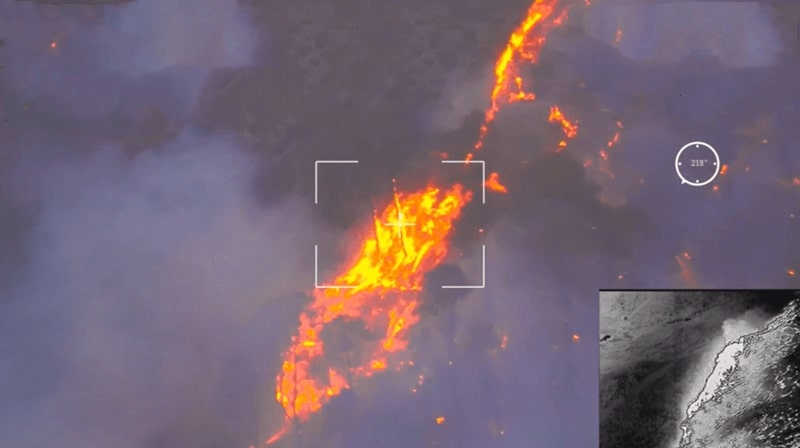
Rapid Response Times
When we talk about drones for public safety, think of them as our rapid first responders in the air. They can reach emergency scenes much faster than traditional methods, especially during search and rescue missions or law enforcement operations. These drones are like our trusty companions, helping us react promptly and potentially saving lives in the process.
Cost-Efficiency
Public safety agencies often have limited budgets. Public safety drones are like budget-friendly superheroes, especially when compared to traditional aircraft. They don't require expensive pilots or consume hefty amounts of fuel. This cost-effectiveness allows us to allocate our resources wisely and invest in other crucial aspects of public safety programs.
Enhanced Safety
Ensuring the safety of your public safety personnel is paramount. Drones act as your eyes and ears in high-risk situations without exposing your teams to potential dangers. They can assess hazardous areas, monitor fire incidents, and even deliver essential supplies to remote locations. This means your teams can work more safely and efficiently, making these drones the best options for security and safety.
How Do Drones Help Public Safety?
Now that we've explored the various domains where public safety drones make a significant impact, let's dive deeper into how these remarkable aerial assets enhance overall public safety:
Law Enforcement
Public safety drones equipped with advanced imaging technology, such as thermal and high-resolution cameras, offer law enforcement valuable aerial surveillance capabilities. These drones, often referred to as "eyes in the sky," excel at monitoring large areas, tracking suspects, and providing rapid responses, all while maintaining a safe distance.
In crime investigations, these drones are instrumental. Their high-definition cameras capture detailed aerial shots, supplying crucial evidence that aids investigators in reconstructing events and building strong cases for legal proceedings.
Furthermore, security drones play a pivotal role in search and arrest operations, offering essential intelligence that helps locate suspects in challenging environments like dense forests or urban areas. This not only enhances officer safety but also boosts operational efficiency significantly.
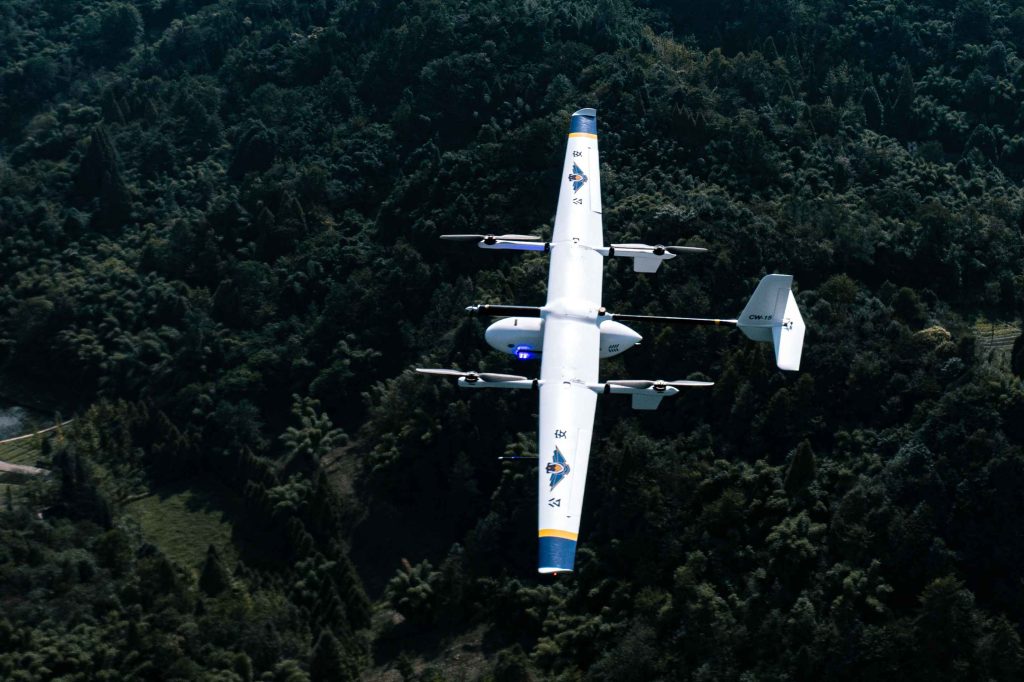
Firefighting
Public safety drones, equipped with thermal and smoke-penetrating tech, are gold for wildfire monitoring. They deliver real-time data on fire behavior, hotspots, and potential threats, helping firefighting teams strategize effectively and safeguard lives and property.
Situational awareness is key during firefighting. Drones provide an aerial view, letting firefighters assess the situation, spot hazards, and adjust tactics on the fly. This data-driven approach ramps up safety and effectiveness.
Mapping fire perimeters and monitoring fire lines are drone-strong suits. They assist in coordinating firefighting resources, ensuring personnel are where they're needed most. This proactive approach cuts risks and optimizes resource use.
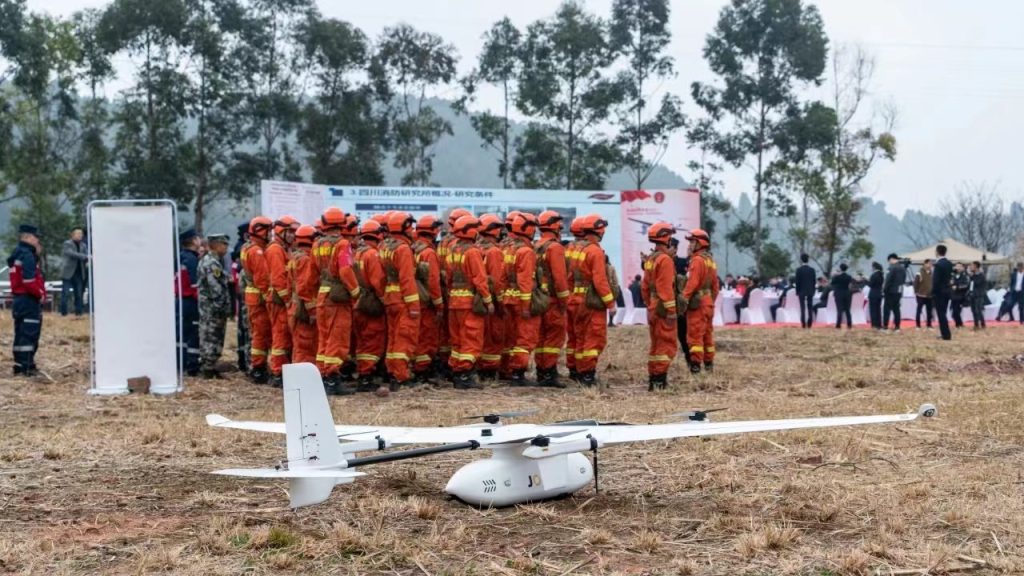
Emergency Response
After natural disasters or emergencies, public safety drones play a critical role by quickly assessing affected areas. They capture high-resolution images and videos that guide decision-makers in prioritizing response efforts and deploying resources effectively. Equipped with thermal imaging technology, these drones can locate individuals in disaster zones, even in low-visibility conditions, significantly enhancing search and rescue operations and improving the chances of saving lives.
Additionally, during emergency response, drones provide essential data on road conditions, infrastructure damage, and accessible routes. This valuable information enables response teams to streamline their efforts and deliver aid promptly to those in need.
Search and Rescue
In search and rescue missions, drones shine in scouting remote, hard-to-reach spots. Real-time video feeds help rescuers assess terrain and plan their approach, reducing risks and speeding up operations. With rescue gear like ropes or flotation devices, they can swiftly retrieve victims from dangerous spots, like water or cliffs. This slashes response times and enhances safety for both rescuers and victims.
In challenging environments like collapsed buildings or unstable terrain, public safety drones with sensors and cameras explore risky areas without risking human lives. They gather vital info that guides rescue efforts.
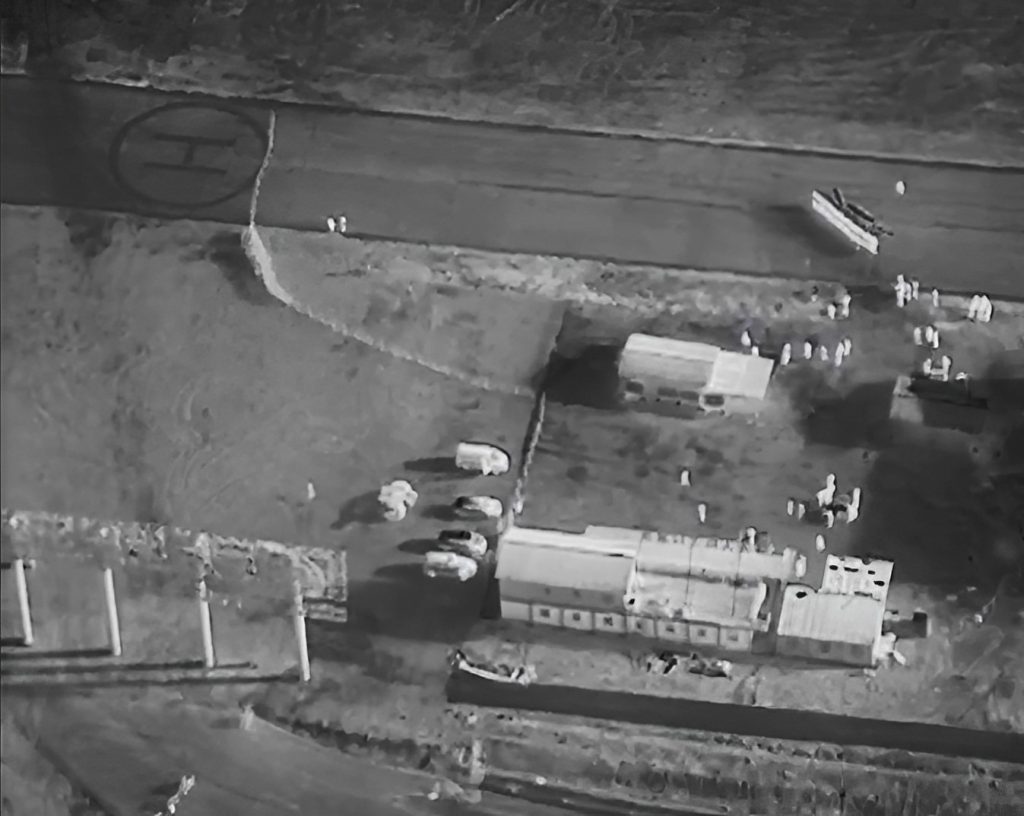
Best Drones for Public Safety
When it comes to public safety drone solutions, a variety of drones can be a game-changer for law enforcement, firefighters, and emergency responders. Here are some of the best options available.
JOUAV CW-15 VTOL Drone - Our Top Pick
The JOUAV CW-15 is a high-performance drone specifically designed for law enforcement agencies. With a deployment time of less than 3 minutes, this drone allows for quick and efficient operations. It is equipped with the MG-120E gimbal camera, which combines a 30x zoom 1920 x 1080 optical camera, a 640*512 infrared camera, a 3-axis gimbal, and AI recognition and tracking capabilities. This enables the drone to capture live video streams with full HD resolution and low latency, ensuring real-time situational awareness.
One of the standout features of the JOUAV CW-15 is its impressive flight time of up to 180 minutes. This is made possible by its smart battery and charger system, allowing for extended missions without the need for frequent recharging. The drone also boasts a cruising speed of 61km/h and a flight range of 50km, providing excellent coverage and versatility.
The JOUAV CW-15 is designed for operation in various environments, including confined spaces like cliffs, forests, and mountains. Its vertical take-off and landing capabilities make it suitable for challenging terrains. Additionally, the drone has a wind resistance of 10.8-13.8m/s, ensuring stable and reliable flight even in adverse weather conditions.
Pros:
- Quick deployment time of less than 3 minutes
- Live video streaming with full HD resolution and low latency
- Impressive flight time of up to 180 minutes for extended missions
- Versatile with a cruising speed of 61km/h and a flight range of 50km
- Maximum payload weight of up to 1kg
- Open-source SDK for customization and integration of additional functionalities
- Suitable for operation in confined spaces and challenging terrains
- Wind resistance of 10.8-13.8m/s for stable flight in adverse weather conditions
- CARE+ PLUS service offering worry-free packages and liability insurance
Cons:
- Relatively high cost.
JOUAV VTOL Hangar System
The JOUAV VTOL Hangar system is an advanced autonomous drone designed specifically for daily surveillance in public safety operations. This system consists of the hangar, the CW-15V VTOL UAV, and the Jocloud management software. The hangar, known as the JOS-C800 drone station, provides a secure and stable environment for the high-performance VTOL UAV to land, recharge, take off, and execute missions. With temperature and humidity control, the drone station ensures safe charging of the CW-15V batteries in various temperature conditions.
The CW-15V UAV boasts impressive features, including a maximum flight time of 180 minutes, a cruising speed of 72km/h, and an operation radius ranging from 30km to 50km. Its IP43 rating ensures durability and protection against environmental conditions. Equipped with the MG-120E gimbal camera, which combines a 30x zoom 1920 x 1080 optical camera, a 640*512 infrared camera, and a 3-axis gimbal, the CW-15V offers advanced imaging capabilities and AI object recognition and tracking.
One of the standout features of the JOUAV VTOL Hangar system is the Jocloud management software, which utilizes advanced artificial intelligence technology. This software automatically recognizes danger signals such as smoke and fire, providing quick warnings. It also offers comprehensive pilot and UAV equipment information, as well as mission data management functions to optimize task allocation and resource scheduling. By sharing flight data with firefighters, police, and other relevant authorities, the Jocloud software facilitates collaborative operations, information sharing, and more efficient response actions.
Pros:
- Secure and stable drone station for safe landing, recharging, and operations
- Impressive flight time, speed, and operation radius for extended coverage and rapid response
- Advanced gimbal camera system for detailed imaging and AI object recognition
- High-definition and low-latency real-time video streaming capabilities
- Open-source SDK for customization and integration of additional functionalities
- Advanced artificial intelligence technology for automatic danger recognition and efficient resource management
- Support for private and public network deployment
- CARE+ PLUS service offering worry-free packages and liability insurance
Cons:
- High cost
- Heavy-weight and requirement for a large operating area
DJI Matrice 300 RTK
DJI Matrice 300 RTK is a powerful drone designed for public safety operations. It features a range of advanced capabilities such as a 15 km transmission range, a 55-min maximum flight time, and a service ceiling of 7000m. With a maximum payload capacity of 2.7 kg and 6 directional sensing & positioning, it offers versatility and precise navigation.

The drone is equipped with a primary flight display and 1080p triple-channel video for enhanced situational awareness. It also supports real-time auto-switching between 2.4 GHz and 5.8 GHz frequencies for reliable flight in high-interference environments.
The DJI Matrice 300 RTK is designed for durability and functionality in various operating conditions. It has an IP45 rating, allowing it to withstand dust and water exposure. The operating temperature range of -20°C to 50°C ensures reliable performance in extreme climates. The drone features a hot-swappable battery system, enabling continuous operation without interruptions. Additionally, the M300 RTK offers an integrated UAV Health Management System (UHMS) to optimize fleet maintenance.
Cons:
- Long transmission range and flight time for extended coverage
- High payload capacity and precise navigation capabilities
- Primary flight display and triple-channel video for enhanced situational awareness
- Secure data transmission with AES-256 encryption
- Durability with IP45 rating and wide operating temperature range
- Hot-swappable battery system for continuous operation
- UAV Health Management System for real-time diagnostics and maintenance recommendations
Cons:
- Large batteries that require frequent changes
- Performance may be affected by excessive water exposure
- Restricted operations in locked zones may waste time in the field
Parrot ANAFI USA
The Parrot ANAFI USA is a compact and lightweight drone designed for public safety operations. It features two 21MP cameras with wide and telephoto lenses, allowing for 32x zoom and 4K video recording. The drone also includes a FLIR Boson 320x256 IR camera for thermal imaging capabilities. With 5-axis hybrid stabilization, the ANAFI USA ensures smooth footage even in challenging flight conditions.
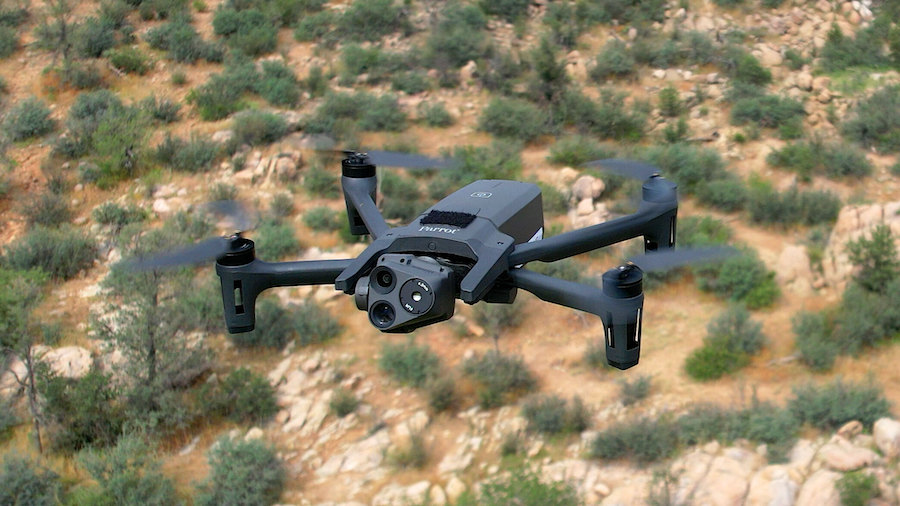
With dimensions of 228x101x76 mm and a weight of only 501 grams, the ANAFI USA is highly portable. Its foldable design allows for easy storage in its waterproof transport case, making it convenient to carry and set up. The drone boasts a flight time of 32 minutes and a speed of 14.7 m/s, providing efficient coverage of areas of interest. It also has a weather rating of IP53, making it resistant to dust and water.
Pros:
- Lightweight and portable
- Compact and lightweight design
- Advanced camera capabilities, including zoom and thermal imaging
- 5-axis hybrid stabilization for steady footage
- Weather resistant for operation in challenging environments
Cons:
- Shorter battery life
- Image quality at extreme zoom levels may be poorer compared to other drones
- Lack of obstacle avoidance capabilities
- Moderate Wi-Fi connection may affect signal stability
- Thermal camera has a lower resolution compared to dedicated thermal imaging drones
- Charging the flight battery takes more than 3 hours
DJI Mavic 2 Enterprise Dual
The DJI Mavic 2 Enterprise Dual is a versatile drone designed to excel in public safety applications. Its standout feature lies in its dual-camera setup, combining a Thermal FLIR® camera with a 4K HDR camera featuring a high-resolution 21MP Sony sensor. This dual-sensor capability allows the drone to capture both thermal and high-resolution visual data simultaneously, making it invaluable for detailed inspections and data collection. Notably, the drone's exceptional 32x zoom capability ensures meticulous scrutiny of structures and environments with remarkable precision.
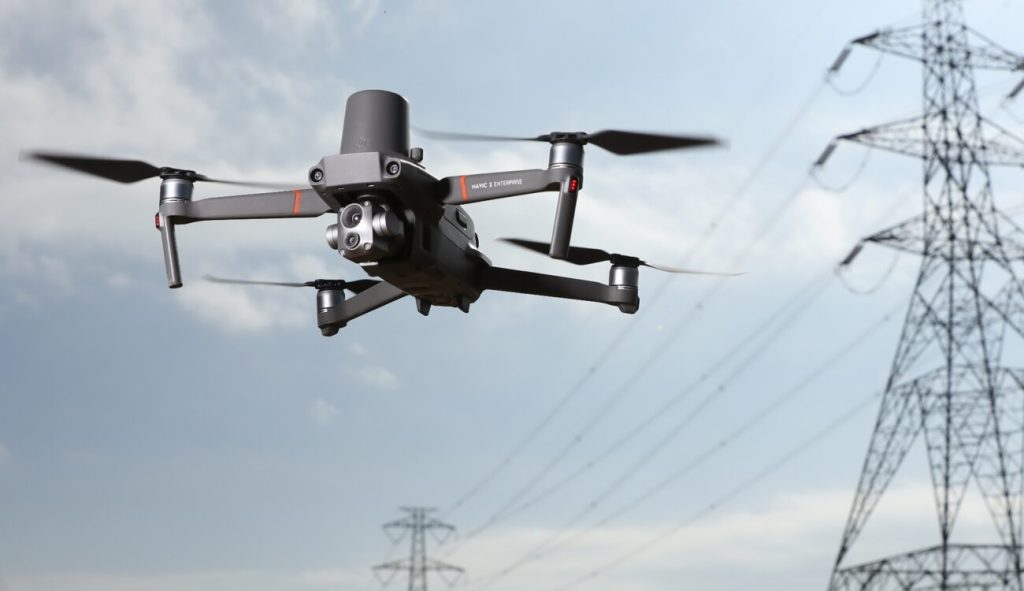
A key strength of the DJI Mavic 2 Enterprise Dual is its exceptional stability. With three-axis stabilization, the cameras remain steady and crystal clear, even when tilted at angles of +/-90°. This stability proves crucial when inspecting structures from various viewpoints or capturing clear perspectives from directly beneath.
The drone's maximum transmission distance of 4km enables extensive coverage over expansive areas in a single flight, while its impressive 26-minute flight duration ensures prolonged inspection sessions for uninterrupted data collection and analysis.
Pros:
- Dual sensor capabilities - infrared and 4K imaging.
- FLIR thermal sensor with MSX for enhanced image context.
- Ample onboard storage (24GB) for data capture.
- GPS timestamping for accurate location data on captured media.
- Omnidirectional obstacle avoidance and DJI AirSense for safe operation.
Cons:
- Short flight time is limited to 26 minutes
- Limited transmission range compared to some competitors.
Autel Evo II 640T
The Autel Evo II Dual drone is equipped with a dual-camera system, featuring a FLIR Boson thermal sensor and a 48MP visual camera. This combination allows for both thermal imaging and high-resolution photography, making it an ideal choice for public safety applications such as search and rescue missions or surveillance operations.
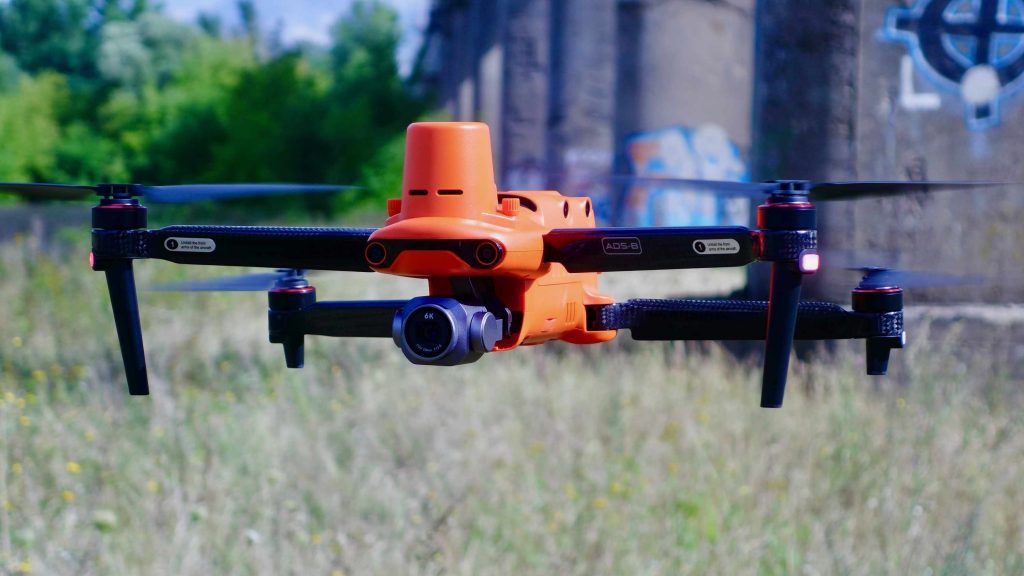
One notable feature of the Autel Evo II Dual is its impressive flight time. With a maximum flight duration of up to 40 minutes, it offers an extended operational period, reducing the need for frequent battery changes and increasing efficiency during critical missions.
The Autel Evo II Dual also stands out with its obstacle avoidance system. Equipped with 12 vision sensors and 2 additional Time of Flight sensors, it can detect and avoid obstacles in real time, ensuring safe and reliable flight even in complex environments.
Pros:
- Dual sensor capabilities - thermal imaging and high-resolution photography.
- 48MP camera for detailed visual inspection.
- Long flight time of up to 40 minutes.
- Obstacle avoidance system for safe flight.
- Foldable design for easy transportation and storage.
- Wide range of intelligent flight modes for enhanced versatility.
- Remote controller with built-in screen for convenient operation.
Cons:
- Only lift 1kg of payload
- Many functions still require a smartphone app
- No live spot metering, temperature range, or temperature alerts
Yuneec H520E
The Yuneec H520 is a professional drone designed specifically for public safety applications. It features a reliable and stable hexacopter design, ensuring enhanced flight stability and safety during critical missions.
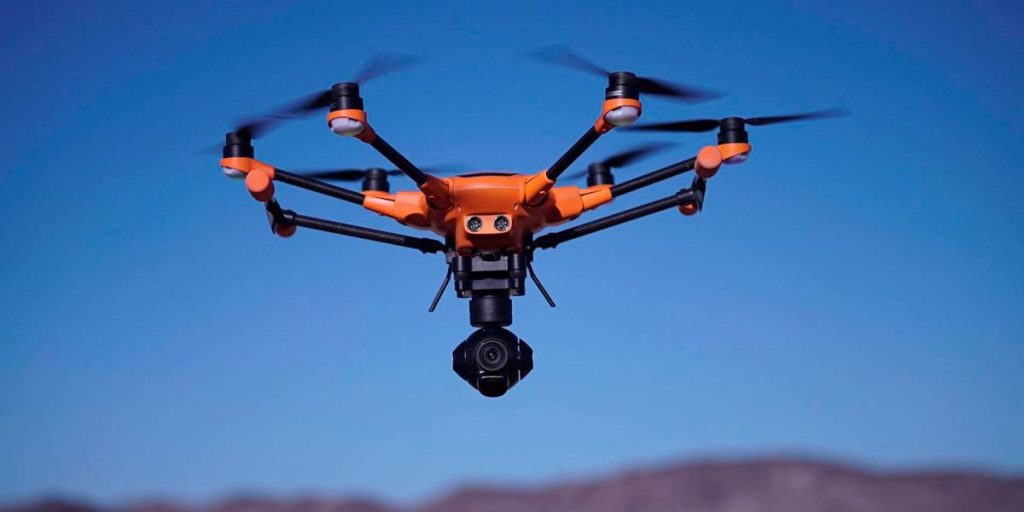
Equipped with a high-resolution 4K camera, the Yuneec H520 allows for detailed visual inspections and aerial photography. Additionally, it offers a wide range of camera settings and modes, including burst mode and time-lapse, providing flexibility in capturing the required data.
One standout feature of the Yuneec H520 is its advanced obstacle avoidance system. Utilizing ultrasonic sensors and vision sensors, it can detect and avoid obstacles in various directions, ensuring safe and efficient flight operations.
Pros:
- Hexacopter design for enhanced stability and safety.
- High-resolution 4K camera for detailed inspections and photography.
- Flexible camera settings and modes for diverse data capture.
- Advanced obstacle avoidance system for safe flight.
- Long flight time of up to 28 minutes.
- Can be equipped with a range of payloads for specialized missions.
- Easy to use and navigate with user-friendly controls.
Cons:
- Limited transmission range compared to some competitors.
- Lacks some advanced features found in other drones.
- Slightly shorter flight time compared to some alternatives.
- Maximum payload limit of 2.5 kg
Things to Consider When Buying a Public Safety Drone
Selecting the right drone for a public safety agency requires careful consideration of various factors. This section aims to highlight essential aspects to bear in mind when purchasing public safety drones.
Mission-Specific Requirements:
When selecting a drone for public safety missions, it's crucial to align the drone's capabilities with the mission's requirements. For law enforcement surveillance, opt for drones with advanced imaging like high-res and thermal cameras, favoring multi-rotor or hybrid drones for agility. Fire and rescue demand swift, confined-space navigation with thermal imaging, making multi-rotor or VTOL-capable hybrids ideal. Disaster response calls for extended flight time and range, typically met by fixed-wing or hybrid drones carrying thermal payloads. Accurate GPS and stable flight are vital for accident scene mapping, favoring fixed-wing or hybrid drones.
Hybrid VTOL drones like the JOUAV CW-15 stand out as versatile options that offer long endurance, the capacity to carry substantial payloads, and the ability to take off and land in challenging environments. These qualities make them a suitable choice for a wide range of public safety missions.
Flight Time and Range
The flight time and range of a public safety drone are critical considerations. It is advisable to choose a drone with flight times ranging from 30 minutes to 3 hours. This allows for extended operational periods, reducing the frequency of battery changes and maximizing mission efficiency. In terms of range, a suitable public safety drone should offer a range between 5 kilometers (3.1 miles) and 50 kilometers (12.4 miles). These long range drones provide the necessary coverage area and operational flexibility for various public safety missions.
Payload Capacity and Capabilities
Public safety drones require a payload capacity typically ranging from 0.5 kilograms (500 grams) to 5 kilograms (5000 grams) to accommodate specialized equipment such as high-resolution cameras, thermal imaging systems, sensors, and payload delivery systems.
These heavy-duty drones play a vital role in various public safety applications. High-resolution cameras are crucial for detailed imagery, while thermal imaging systems are essential for search and rescue and firefighting missions. Optical zoom capabilities are important for capturing distant details, and payload delivery systems enable the transportation of critical supplies to remote locations.
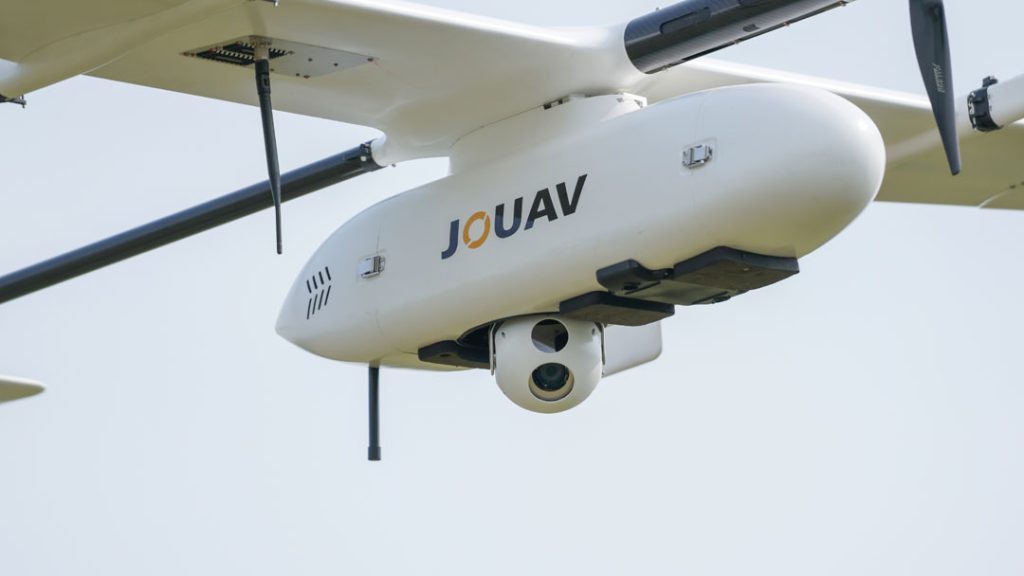
Durability and Weather Resistance
Public safety agencies often operate in challenging and unpredictable environments. Therefore, the durability and weather resistance of a drone are of utmost importance. Look for drones designed to withstand harsh conditions, including wind, rain, and extreme temperatures. Robust construction, reinforced frames, and high-quality materials contribute to a drone's ability to endure demanding operational scenarios.
Flight Stability and Maneuverability
To effectively carry out public safety missions, drones must possess stable flight characteristics and precise maneuverability. Stability is crucial for capturing clear imagery, conducting accurate inspections, and ensuring smooth video transmission. Maneuverability allows the drone to navigate tight spaces, rapidly change directions, and hover with precision. Pay attention to drones equipped with advanced flight control systems and stabilization technologies.
Data Security and Privacy
As public safety drones capture and transmit sensitive data, ensuring robust data security and privacy measures is paramount. Look for drones with built-in encryption protocols, secure data storage, and reliable transmission systems. Additionally, consider drones that allow for user-defined privacy settings, such as geofencing capabilities, to prevent inadvertent intrusions into private or restricted areas.
Training and Support
Investing in public safety drones necessitates proper training for personnel responsible for operating and maintaining the equipment. Consider the availability of comprehensive training programs provided by the drone manufacturer or authorized trainers. Additionally, assess the level of technical support and after-sales service offered to ensure seamless operations and swift resolution of any issues that may arise.
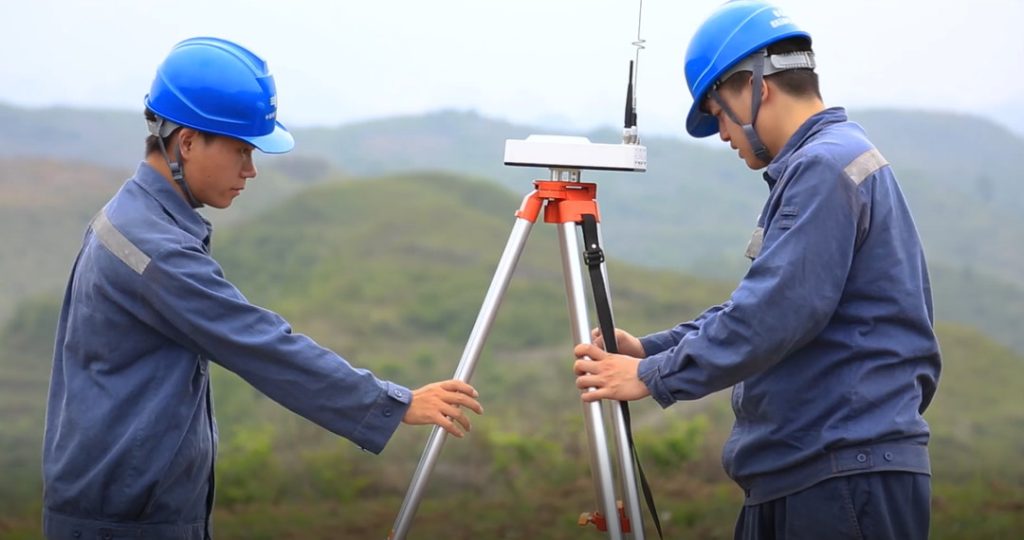
Regulation for Public Safety Drone Use
To ensure the safe and responsible operation of drones in public spaces, public safety agencies must adhere to a comprehensive set of rules and regulations.
Federal Aviation Administration (FAA) Regulations
In the United States, the Federal Aviation Administration (FAA) plays a pivotal role in regulating drone operations. Public safety agencies must adhere to FAA regulations that encompass drone registration, pilot certification, airspace restrictions, and operational limitations. For instance, drones must typically weigh less than 55 pounds, fly at or below 400 feet above ground level, and avoid flying near airports, restricted airspace, and large gatherings of people. Public safety agencies must ensure that their drone pilots are FAA-certified and well-versed in these regulations to operate drones legally and safely.
Local and State Regulations
Beyond federal regulations, public safety agencies must also consider local and state laws governing drone operations. These regulations can vary significantly from one jurisdiction to another and may include restrictions on drone flight in certain areas, altitude limits, and privacy considerations. It is imperative for public safety agencies to collaborate closely with local law enforcement and relevant authorities to navigate these regulations effectively.
Privacy and Data Security
Drones equipped with cameras and other sensors raise concerns about privacy and data security. Public safety agencies must establish strict protocols for data collection, storage, and sharing to protect individuals' privacy rights. Compliance with laws such as the Health Insurance Portability and Accountability Act (HIPAA) and the Family Educational Rights and Privacy Act (FERPA) may be necessary when handling sensitive information captured by drones during public safety operations.
Public Awareness and Education
In addition to adhering to regulations, public safety agencies should prioritize public awareness and education regarding drone operations. This involves informing the public about the purpose and benefits of drone use in public safety, as well as reassuring citizens that their privacy and safety remain paramount. Open communication with the community can help build trust and reduce concerns related to drone operations in public spaces.
FAQ
What Are Public Safety Drones?
Public safety drones are unmanned aircraft systems specifically designed and utilized for a wide range of public safety applications. These drones are equipped with advanced features and technology tailored to meet the unique demands of first responders, law enforcement, firefighters, search and rescue teams, and other public safety organizations.
What Drones Are Used in Public Safety?
Public safety agencies employ a diverse range of drones, each tailored to specific mission needs. Multi-rotor drones, known for maneuverability and stability, excel in tasks like surveillance and search and rescue. Fixed-wing drones cover large areas efficiently, making them ideal for disaster assessment and mapping. Hybrid VTOL drones like JOUAV CW-15 combine the flexibility of multi-rotors with a range of fixed wings, perfect for rapid deployment and confined space access.
How Much Do Public Safety Drones Cost?
The cost of public safety drones can vary significantly depending on factors such as drone type, capabilities, payload, and additional equipment. Generally, public safety drones can range in price from approximately $5,000 to $125,000 or more.
- Entry-Level Drones: These drones are typically more affordable, starting at around $5,000 to $10,000. They often have basic features and may not include advanced payloads or capabilities.
- Mid-Range Drones: Mid-range drones with improved capabilities, such as thermal imaging cameras or longer flight times, can cost between $10,000 and $50,000.
- High-End Drones: Advanced drones equipped with specialized sensors, advanced imaging technology, and extended flight times can range from $50,000 to $125,000 or more.
What is the Best Drone for Emergency Services?
The CW-15 VTOL drone is ideal for emergency services, purpose-built for public safety and rapid response. It excels in confined spaces thanks to its vertical take-off and landing capability.
With an extensive 180-minute flight time and a 50km range, it covers large areas efficiently. Its 3kg payload capacity and open-source SDK enable the use of high-quality cameras like a 61MP RGB camera, EO/IR gimbal camera, and LiDAR for data collection in emergencies.
The CW-15 boasts advanced flight control, and obstacle avoidance, and operates in temperatures from -20 to 50 degrees Celsius. Its modular design and vertical take-off and landing make it a flexible and invaluable tool for emergency services, enhancing situational awareness and aiding in rescue missions.
Do Police Use Drones to Watch People?
Yes, law enforcement agencies in various countries use drones for surveillance purposes in certain situations. The primary goal of using drones in law enforcement is to enhance public safety, assist in investigations, and respond to emergencies effectively. Surveillance with drones can encompass a wide range of activities, including monitoring public gatherings, assisting in search and rescue operations, documenting crime scenes, and aiding in traffic management.
Are Police Using Drones for Surveillance?
Yes, police departments and law enforcement agencies have integrated drones into their operations for surveillance purposes. These drones are equipped with cameras, and in some cases, advanced imaging technology like thermal cameras or high-resolution video cameras. The use of drones for surveillance is subject to legal and ethical considerations, including the need to obtain search warrants in certain situations and respecting individuals' privacy rights.
How Can You Spot a Police Drone?
While drones can produce some noise, they are generally much quieter than traditional aircraft. The sound of a drone is not necessarily loud and annoying. In fact, many consumer and professional drones are designed to operate quietly to minimize disturbance. However, some larger drones used by law enforcement agencies may produce more audible noise.
Police drones may have lights, but these lights are often used for orientation and visibility rather than surveillance. The lights help the drone operators maintain visual contact with the drone during flight.





